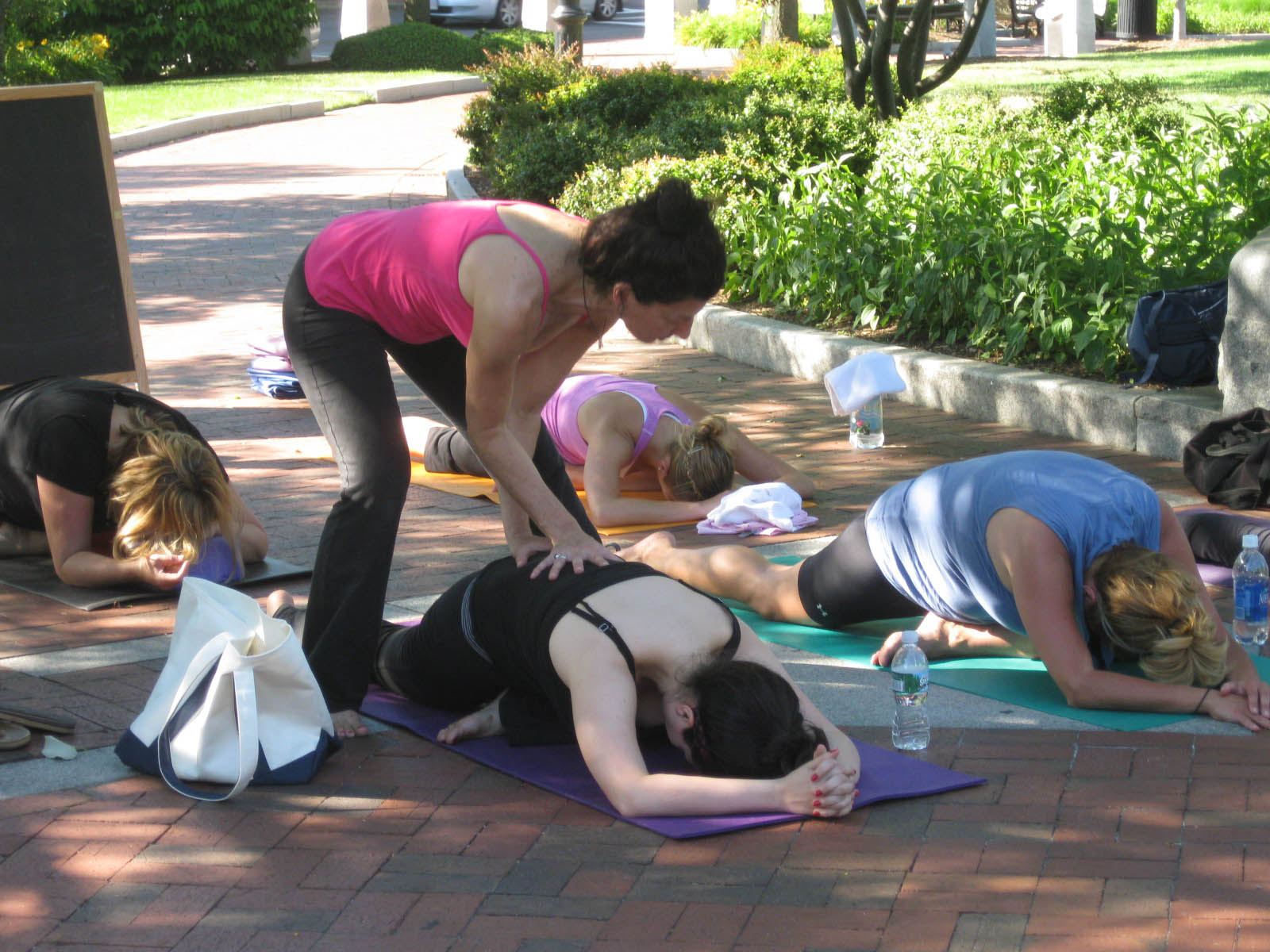I had a woman in class the other day whisper to me as I was assisting her, “ What am I supposed to be feeling in this pose?†I broke out into a warm smile, as I love these kinds of questions. I love any feedback, actually, during class, because it shows that students are interested and engaged and looking for information about how to fully experience yoga.
In each yoga pose, there is always a primary action. This primary action creates the optimal conditions for a particular physical sensation to arise. For instance, if I ask you to lie on your back and stretch your arms behind you and your legs in front of you, the primary action would be to lengthen the spine. In this position, that’s the sensation that I am encouraging you to feel while taking this movement. In a pose like Downward Facing Dog, the primary action, again, is lengthening the spine. However, the ability to feel that sensation may be hampered by the position of the body. Unlike when you were lying on your back, supported by the floor and completely supine, now you’re on your hands and feet, upside down, like a triangle and you may be struggling to feel length in your spine because your hamstrings are tight or your upper body lacks the strength to hold you upside down.
Every pose has a primary action but it is up to us as yoga teachers to share this with the people in our classes. It’s not always obvious and in the pose we were doing in my example above (Baddha Konasana, folding forward, supported by blocks under the head, as in a Yin practice), the woman was not sure if she should feel sensation in her hips, outer thighs or lower back. Although it is essential that we share the objective of the pose, it’s always helpful to remind people that they may experience the pose differently, given the unique nature of their body.
Another factor to consider is when people actually lose connection to certain actions in the body and their feedback that they are “not feeling†the pose’s action is actually feedback in and of itself. This happens often when a person is highly flexible and can sit for long periods of time in a pose that requires a great deal of flexibility but feels little sensation. It’s as if they have desensitized their body to feeling stretch through years of overstretching a certain part of the body. In these situations, it’s helpful to actually have the person pull back slightly in the pose and create more stability in the foundation. This can help the practitioner build more muscle and a greater sense of feeling grounded versus one of sitting in the joints (which is definitely unhealthy for the body, especially over the long term).
In all instances, one of the best ways to understand the primary action of the pose is to ask. If you don’t have a chance to ask, look for signs in your body as you’re holding the posture. Taking deep breaths, notice where you feel physical sensation. Notice if your foundation is stable so you can experience the pose fully. Notice if your eyes are wandering around the room, looking for clues in the people around you and re-direct your attention to your own experience. Allow for the focus of the pose to show itself through your attention to detail, quality of breathing and present state of mind.
Yoga practice is a life-long endeavor. The beauty of the poses is that they each have so much to share and our experience of each one changes every time we take each pose. The challenge is to stay alert and present, so we don’t miss the signs from each one and to practice with compassion and an appreciation for the unique qualities of our bodies and minds.

